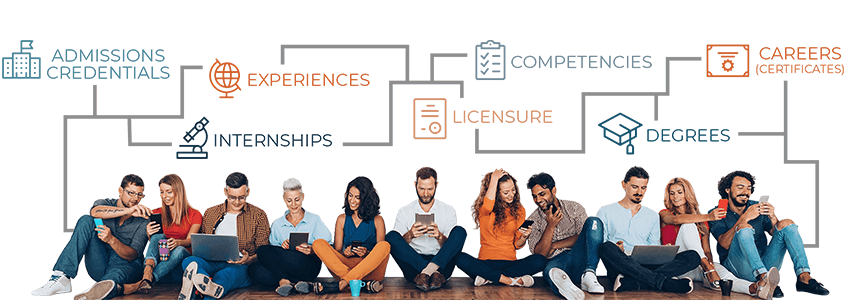- BLOG HOME
- »
- Verification Services
- »
- Data Transparency: The Key to Solving the Skills Gap and Benefiting Employers, Educators and Learne...

Data Transparency: The Key to Solving the Skills Gap and Benefiting Employers, Educators and Learners
By Larry Hatch, Vice President of Business Solutions, National Student Clearinghouse
As spring begins, there is a great deal of hope for the American economy.
Vaccine distribution is rapidly increasing, and the government has stepped up with several rounds of stimulus. It is widely believed that pent-up demand will bring an economic boom in 2021, with employment rates possibly returning to pre-pandemic levels. With the hope that the worst of the crisis is behind us, we need to examine the structural challenges facing our labor market, even in the best of times. Without innovations from employers and employees, the skills gap will continue to hold back our economy and limit opportunities for millions of workers.
Before the onset of the pandemic, hiring managers consistently reported difficulty finding the right candidates to fill open positions. In 2019, The Society for Human Resource Management (SHRM) found that 83% of HR professionals had trouble recruiting candidates in the previous 12 months. Meanwhile, 75% of those having recruiting difficulty say there is a shortage of skills in candidates for job openings. In the years before the pandemic, the Bureau of Labor Statistics reported available jobs outnumbered unemployed Americans seeking them. As employment levels return to normal, the skills gap will grow and continue to inhibit the U.S. economy.
This is even more important in an economy where the demands on the workforce are changing rapidly. IBM research found as many as 120 million workers surveyed in the world’s 12 largest economies may need to be retrained or reskilled because of AI and automation. Additionally, IBM finds that the time it takes to address a skills gap through training has increased more than ten times in recent years. In 2014, it took three days on average to close a capability gap through training, while in 2018, it took 36 days. The learning curve is growing for workers, and we need a comprehensive strategy to ensure they are not left behind.
To address the skills gap, employers and educators need to collaborate to create a system that clearly outlines the skills necessary to compete in today’s economy and that provides curricula and training to make these skills obtainable. Too often, employers fail to outline the skills required to succeed within their organization. Meanwhile, educational institutions fail to prioritize preparing students for the workforce. This two-sides-of-the-coin issue leaves many students and workers uncertain about the steps they need to take to enter the labor market and advance in their careers.
Leading corporations like IBM and Walmart are working to clearly outline skills held by their employees to match them to company opportunities. They are also refining job descriptions, so students and candidates have a better sense of the skills they need to gain employment and succeed in that position. In some cases, the business community is also taking a more active role in alerting educational institutions to the skills they need and offering assistance to develop relevant curricula.
At the National Student Clearinghouse, we have been studying these challenges and the education-to-workforce opportunity has emerged as an urgent priority for us especially after the pandemic. By partnering with IBM and Walmart, and others we are looking to address these challenges head on.
The Clearinghouse has created a learning and employment record (LER) tool to bring transparency to the skills gap challenge. The LER provides verifiable information about a person’s achievements in education or training processes, whether in the classroom or workplace, that can be shared between learning institutions and businesses. The Clearinghouse is testing this program through a cybersecurity pilot with Western Governors University, Central New Mexico Community College, along with IBM.
An important benefit of increasing skills transparency is bringing increased accountability to the hiring process. This is especially important as our country prioritizes diversity, equity, and inclusion in our economy. By providing a transparent record of an individual’s accomplishments and earned skills, opportunities will open for qualified candidates who may have been overlooked.
As the nation’s economic recovery begins, it is vital to rebuild in a way that addresses not just our short-term challenges, but the long-term issues that confronted us before the pandemic. Building our economy with a stronger employment pipeline will allow businesses to grow, workers to find more opportunities, and for all to benefit from an improved education-to-workforce path.
“To address the skills gap, employers and educators need to collaborate to create a system that clearly outlines the skills necessary to compete in today’s economy and that provides curricula and training to make these skills obtainable.”
Larry Hatch
Vice President of Business Solutions, National Student Clearinghouse
Additional Resources:


